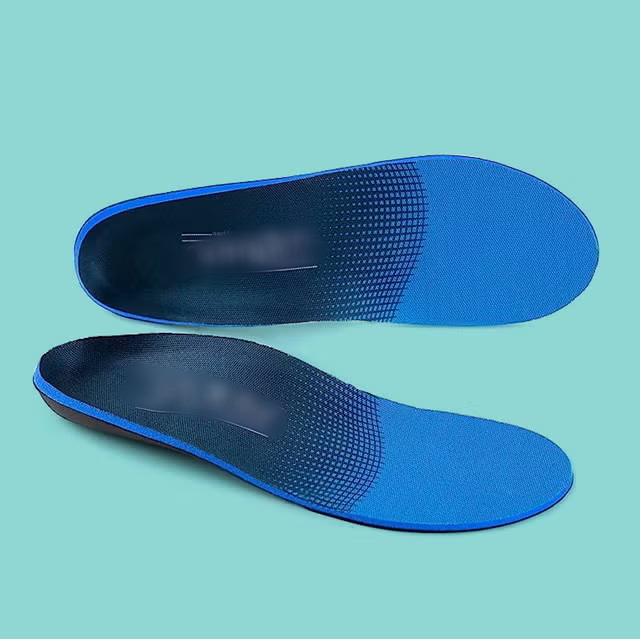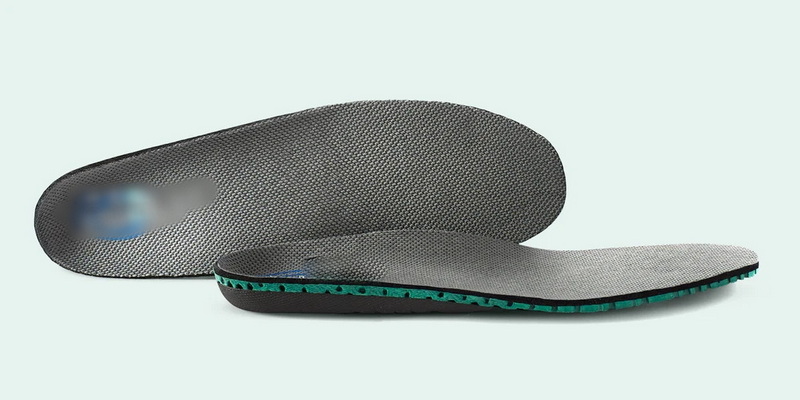










Content Menu
● The Evolution of Shoe Insoles
● What Are the Main Functions of Shoe Insoles?
>> Pain Relief and Injury Prevention
>> Supportive/Arch Support Insoles
>> Sports and Performance Insoles
● The Anatomy and Materials of a Modern Insole
● Application Scenarios for Shoe Insoles
>> Everyday and Occupational Use
>> Medical Use and Rehabilitation
● How to Choose the Right Insole
● User Instructions: Fitting and Caring for Insoles
>> Installation
● The Science and Technology Advances in Insoles
>> Digital Design and 3D Printing
>> Smart Insoles and Data Analytics
>> Eco-Friendly and Sustainable Trends
● Practical Case Studies and Testimonials
>> 1. What materials are best for shoe insoles?
>> 2. When should insoles be replaced?
>> 3. Are custom orthotics better than standard insoles?
>> 4. Can I use the same insoles in different shoes?
>> 5. How should I clean and store my insoles?
Shoe insoles, sometimes called inserts or footbeds, underpin every step we take. Often overlooked, these simple-seeming components possess the power to transform ordinary footwear into custom comfort platforms, boost athletic ability, and play a vital role in health and rehabilitation.

Shoes have housed insoles, in some form, since the earliest days of footwear. Ancient civilizations used layers of wool for comfort and foot relief, while medieval and Renaissance periods favored firm leather, felt, cork, or wool to protect feet from harsh shoe interiors. The Industrial Revolution brought mass production, making comfort-focused insoles more widely accessible, while advances in the 19th and 20th centuries introduced anatomical knowledge and the first true medical orthotics. With the rise of orthopedics as a medical field in the early 20th century, insoles designed for specific health problems flourished. Rubber, cork, and later foam and gel, enabled whole new classes of insoles—mass-produced, lighter, and better at shock absorption. Today, modern synthetic materials, advanced composites, and even 3D printing set the stage for personalized orthotic solutions for everyday life, athletics, and special medical needs.
The primary job of most insoles is comfort. They provide a protective layer between your feet and the unforgiving sole of the shoe. With advances in material science, comfort insoles now use engineered foam, gel, and even memory materials that conform to the foot's shape, absorbing shocks and minimizing fatigue.
Shoe insoles aid foot posture. They support the arch, stabilize the heel, and align the foot at each step. Well-designed support reduces strain on muscles and joints—not just in the foot, but throughout the kinetic chain up to the knees, hips, and lower back. Orthotic insoles are often customized to correct biomechanical irregularities or accommodate chronic health problems.
Athletes and active individuals often rely on high-performance insoles to enhance propulsion, absorb heavy impacts, and stabilize movement. Advanced carbon fiber and responsive foams yield maximum energy return and targeted support.
Insoles can address or reduce symptoms from plantar fasciitis, flat feet, metatarsalgia, bunions, diabetic neuropathy, and more. Orthopedic models may redistribute pressures, offload sensitive areas, and prevent secondary complications in high-risk users.
Modern insoles utilize antimicrobial materials, moisture-wicking fabrics, and ventilation to manage odor and encourage foot health.
Engineered for those seeking extra softness and relief for everyday wear, these products prioritize shock absorption with thick foams or gel pads.
These insoles target the arch and heel, using structured shapes, added rigidity, and ergonomic contours to hold the foot in a safe, neutral position. Ideal for flat feet, overpronation, or plantar fasciitis.
High-impact sports require insoles with greater durability, rebound, and stability. Many feature integrated heel cups, metatarsal pads, and multi-zone cushioning for running, court sports, or field activities.
Orthotics may be prescription-made or over-the-counter. Designed for foot deformities, diabetes, postural problems, and chronic pain, they are often heat-molded or custom-built from foot molds.
Heated insoles, height-increasing insoles, and massaging insoles each address highly specific needs using targeted construction and innovative materials.
- Foam: Polyurethane and EVA foams provide shock absorption, resilience, and lightweight comfort.
- Gel: Silicone gel or other synthetic gels excel at dispersing pressure and relieving pain for high-impact users.
- Memory Foam: Adapts to foot shape for customized comfort and support.
- Leather: Offers natural breathability, durability, and a classic feel, often in dress shoe insoles.
- Cork: Naturally anti-microbial, supportive, and gently resilient.
- Carbon Fiber: Used in athletic or corrective insoles for light strength and rigidity.
- Top Covers: Made of fabric or leather, these wick moisture and add smoothness.
- Arch Support/Core: The main supportive structure, customized in shape and density.
- Heel Cups: Deep cups stabilize the heel, essential for overpronators or those needing extra rearfoot control.
- Metatarsal Pads: Ease forefoot pressure and prevent symptoms like Morton's neuroma.
- Ventilation Channels: Facilitate airflow and cooling.
1. Material Selection: Engineers select the material blend for cushioning, support, and durability.
2. Design and Cutting: Cutting dies and digital molds achieve the desired shape and zones.
3. Assembly: Layers are bonded—often involving foam, fabric, and specialty inserts.
4. Shaping and Finishing: Final trimming, shaping, and sometimes heat-molding refine the product.
5. Quality Check: Visual inspection and physical testing ensure consistency in thickness, resilience, and comfort.

Factory workers, nurses, and retail employees who stand or walk extensively seek out comfort insoles to reduce fatigue, joint pain, and the risk of long-term injury. Anti-fatigue and shock-absorbing models perform especially well in these settings.
Elite athletes and dedicated amateurs rely on finely-tuned sports insoles to boost comfort, performance, and injury prevention. These products are commonly transferable between different shoes and sometimes custom-built for individual sport biomechanics.
Individuals dealing with foot pain, diabetes-induced neuropathy, or post-operative recovery benefit from orthotic insoles designed to redistribute pressure, protect vulnerable areas, and hasten recovery.
Determining whether your foot is flat, high-arched, or neutral is the starting point. Standing on a damp surface and examining your footprint can be a quick diagnostic tool. Many retail outlets offer scanning stations for greater accuracy.
A running shoe accommodates thicker, more responsive insoles. For office wear and dress shoes, slim leather or low-profile foam is considered. Outdoor boots benefit from durability and insulation.
- Antimicrobial Liners: Help control odor and fungal growth.
- Trim-to-Fit Designs: Let users personalize the shape for a snug fit.
Severe foot problems or specific rehabilitation goals often require visiting a podiatrist or orthotist for prescription orthotics—custom-crafted for a user's unique anatomy and gait.
Most aftermarket insoles are trim-to-fit. Remove the original insole, use it as a template, and cut the new insole to size. Ensure it lies flat and does not create pressure points.
Regular cleaning increases lifespan and hygiene. Hand-wash insoles in mild soap and water, then air dry. Replace them when they lose shape, develop odors, or tear.
Modern labs use foot-scanning technology to design insoles based on plantar pressure mapping. 3D printing allows insoles to be tailored to each customer's pressure points and biomechanical needs with minimal waste.
Embedded microchips and sensors now monitor step count, gait, impact forces, and balance in real time, offering insight for athletes and patients alike. These “smart insoles” provide feedback for preventative or rehabilitative care.
Manufacturers now experiment with biodegradable foams, recycled materials, and plant-based alternatives. Sustainable shoe insoles reduce environmental impact and appeal to eco-minded consumers.
Rapid urbanization, awareness of musculoskeletal health, and growth in sports culture have dramatically increased demand for high-quality insoles. OEM manufacturers serving global brands and retailers now lead in innovation and order fulfillment, while the rise of e-commerce makes personalized insoles accessible worldwide.
Many users with chronic plantar fasciitis report near-instant relief when switching to targeted orthotic insoles. Factory workers describe reduced fatigue and less leg swelling when supplied with high-density foam insoles.
Professional runners and basketball players credit high-rebound, supportive insoles with reducing injury downtime and improving stability during explosive movements.
Patients with diabetic neuropathy benefit significantly from medical-grade, pressure-relieving insoles, which help prevent dangerous ulcers and secondary complications.
Shoe insoles have moved far beyond simple cushioning. They are adaptive solutions that support the needs of people in every walk of life: from athletes breaking records to workers standing all day, to patients managing chronic pain or postural issues. Their evolution, blending craftsmanship, medical science, and digital innovation, guarantees an insole solution for every challenge—whether it's comfort, rehabilitation, or sporting excellence. Businesses that supply modern insoles play an essential role in global footwear, and as shoe technology continues to advance, the humble insole will only become more important in delivering healthy, happy footsteps worldwide.

Materials like foam, gel, leather, cork, and modern composites such as carbon fiber or 3D-printed polymers are widely used in premium insoles. Each material brings unique advantages, from cushioning to support.
Change insoles when they lose shape, become compressed, develop persistent odor, or show signs of visible wear. Athletes and workers may need replacement every three to six months.
Custom orthotics provide precise correction for foot mechanics, pain, or medical conditions. Standard insoles focus on general comfort or support and are more affordable and widely available.
Most aftermarket insoles are transferable. Trim-to-fit designs and careful sizing help ensure compatibility across different footwear types.
Wash insoles by hand with mild soap and warm water. Let them dry fully before reinserting. Store shoes and insoles in a cool, dry place to prevent fungal growth.